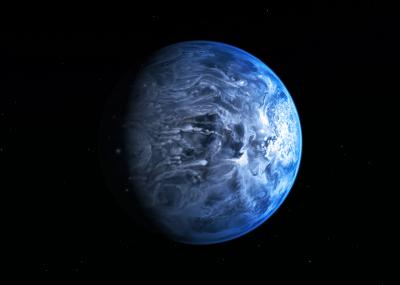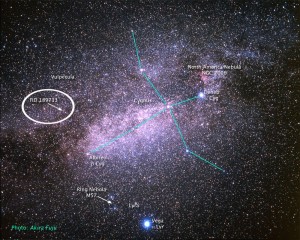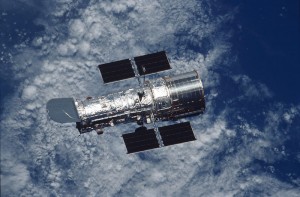
Artist’s impression of the deep blue planet HD 189733b (NASA)
The Hubble Space Telescope has helped scientists determine the color of a planet outside of our Solar System for the first time.
Located about 63 light years from Earth, the planet known as HD 189733b would be a deep cobalt blue if viewed at close range, similar to Earth’s color as seen from space.
Despite the comparable colors, that’s where the similarities between Earth and the exoplanet end, researchers say. Astronomers describe the planet, referred to as a “deep blue dot,” as a huge gas giant orbiting close to its host star, HD 189733, which is located in the constellation of Vulpecula, the Fox.
The planet’s atmosphere has a blazing temperature of over 1,000 degrees Celsius, and when it rains there, it rains hot molten glass that falls sideways due to violent 7,000 kilometer-per-hour winds.

The HD 189733 system (circled) is located in Constellation Vulpecula, near Cygnus. (Akira Fujii and Zolt Levay via Wikimedia Commons)
HD 189733b is one of the closest extra-solar planets to Earth that can be observed to cross the face of its star. Its atmosphere, researcher say, is unsettled and unusual in nature, “with hazes and violent flares.”
“This planet has been studied well in the past, both by ourselves and other teams,” said Frederic Pont from the University of Exeter. “But measuring its color is a real first; we can actually imagine what this planet would look like if we were able to look at it directly.”
The research team was able to determine the exoplanet’s color by measuring how much light reflected off its surface, a property known as albedo, or a reflection coefficient.
Astronomers say HD 189733b is faint compared to surrounding objects. Since the planet is so close to its bright star, the researchers had to isolate its light from the starlight. To do this, the team used Hubble’s Space Telescope Imaging Spectrograph (STIS) to study the planet/star system before, during, and after the exoplanet went behind its star during orbit.
“We saw the brightness of the whole system drop in the blue part of the spectrum when the planet passed behind its star,” said the study’s first author, Tom Evans from the University of Oxford. “From this, we can gather that the planet is blue, because the signal remained constant at the other colors we measured.”
Unlike the Earth, HD 189733b’s cobalt blue color does not come from the reflection of oceans, but rather from its hazy and stormy atmosphere which scientists think may be mixed with silicate particles that disperse blue light.
“It’s difficult to know exactly what causes the color of a planet’s atmosphere, even for planets in the Solar System,” said Pont. “But these new observations add another piece to the puzzle over the nature and atmosphere of HD 189733b. We are slowly painting a more complete picture of this exotic planet.”






















Amazing! Any determination of the planet’s density? The 1000 degree C temp must be a surface temperature – right?
Cool..in the future we will all make them as our homes!!